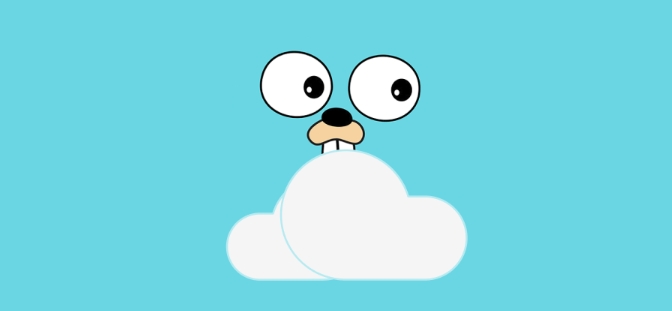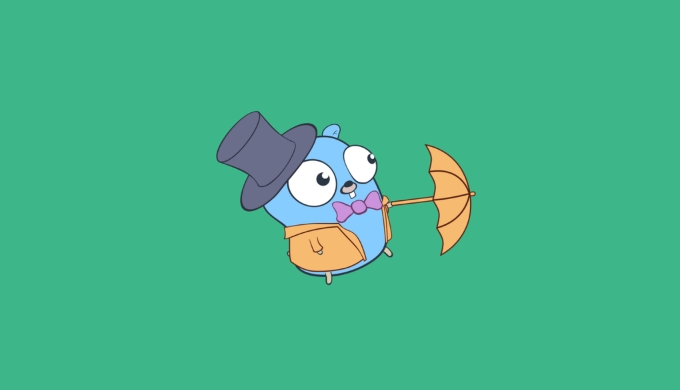How to use //go:embed for static assets in a web server
Jul 12, 2025 am 02:24 AM//go:embed introduced in Go 1.16 can simplify static resource packaging. 1. Embed a single file: Use //go:embed index.html to embed HTML or image into the program, read and respond to requests through static.ReadFile("index.html"); 2. Embed the entire directory: For example, //go:embed assets/* can embed the front-end structure as a whole and provide services through http.FileServer; 3. Notes include that the path must be a relative path, variables or expressions cannot be used, and the file content is copied during construction and no longer depends on the original file system; 4. It is recommended to use local file services in the development stage, enable embed during publication, and combine it with the CI/CD construction process to improve efficiency.

After the introduction of //go:embed in Go 1.16, packaging static resources has become much easier. If you are developing a web server and want to embed HTML, CSS, JS, or images directly into the binary, embed package is your good helper.

Basic usage: Embed a single file
The simplest scenario is to embed an HTML file or an image:

package main
import (
"embed"
"fmt"
"io/fs"
"net/http"
)
//go:embed index.html
var static embedded.FS
func main() {
http.HandleFunc("/", func(w http.ResponseWriter, r *http.Request) {
data, _ := static.ReadFile("index.html")
fmt.Fprint(w, data)
})
http.ListenAndServe(":8080", nil)
} The above code will read index.html in the current directory and embed it into the program. The content of this HTML can be output when accessing the root path.
Embed the entire directory: handle multiple static files
If you have multiple static files, such as a complete front-end page structure (HTML CSS JS image), you can embed the entire directory:

//go:embed assets/* var static embedded.FS
Then provide these static resources through http.FileServer :
fs := http.FS(static)
http.Handle("/static/", http.StripPrefix("/static", http.FileServer(fs))) In this way, accessing /static/style.css can get the embedded CSS file. Note that the path should be consistent with what you specified in //go:embed .
Tip: Make sure your embed path is not spelled wrongly. If the path is wrong, there will be no error at runtime, but the file cannot be loaded.
Notes and FAQs
- The path must be a relative path :
//go:embedonly accepts paths relative to the current source file. - Cannot use variables or expressions other than wildcards : For example
//go:embed ${ASSET_DIR}is illegal. - The file contents are copied during construction : Once compiled, the embedded files will no longer depend on the original file system.
- It is recommended to use local file services first during debugging : you can use
embedin the development stage first, and then enable it when it is ready to be released to improve development efficiency.
Actual deployment suggestions
- If you build a project with CI/CD, you can directly place the static file in the project directory, and the Go compiler will automatically handle it.
- For large front-end projects, embedded code can be generated in the build process to avoid manual maintenance.
- Consider using third-party tools like go.rice or packr to simplify operations, but
embedalready meets most needs.
Basically that's it. Master the basic usage of //go:embed , and you can easily package static resources into Go programs for easy deployment and distribution.
The above is the detailed content of How to use //go:embed for static assets in a web server. For more information, please follow other related articles on the PHP Chinese website!

Hot AI Tools

Undress AI Tool
Undress images for free

Undresser.AI Undress
AI-powered app for creating realistic nude photos

AI Clothes Remover
Online AI tool for removing clothes from photos.

Clothoff.io
AI clothes remover

Video Face Swap
Swap faces in any video effortlessly with our completely free AI face swap tool!

Hot Article

Hot Tools

Notepad++7.3.1
Easy-to-use and free code editor

SublimeText3 Chinese version
Chinese version, very easy to use

Zend Studio 13.0.1
Powerful PHP integrated development environment

Dreamweaver CS6
Visual web development tools

SublimeText3 Mac version
God-level code editing software (SublimeText3)

Hot Topics
 What are the implications of Go's static linking by default?
Jun 19, 2025 am 01:08 AM
What are the implications of Go's static linking by default?
Jun 19, 2025 am 01:08 AM
Go compiles the program into a standalone binary by default, the main reason is static linking. 1. Simpler deployment: no additional installation of dependency libraries, can be run directly across Linux distributions; 2. Larger binary size: Including all dependencies causes file size to increase, but can be optimized through building flags or compression tools; 3. Higher predictability and security: avoid risks brought about by changes in external library versions and enhance stability; 4. Limited operation flexibility: cannot hot update of shared libraries, and recompile and deployment are required to fix dependency vulnerabilities. These features make Go suitable for CLI tools, microservices and other scenarios, but trade-offs are needed in environments where storage is restricted or relies on centralized management.
 How does Go ensure memory safety without manual memory management like in C?
Jun 19, 2025 am 01:11 AM
How does Go ensure memory safety without manual memory management like in C?
Jun 19, 2025 am 01:11 AM
Goensuresmemorysafetywithoutmanualmanagementthroughautomaticgarbagecollection,nopointerarithmetic,safeconcurrency,andruntimechecks.First,Go’sgarbagecollectorautomaticallyreclaimsunusedmemory,preventingleaksanddanglingpointers.Second,itdisallowspointe
 How do I create a buffered channel in Go? (e.g., make(chan int, 10))
Jun 20, 2025 am 01:07 AM
How do I create a buffered channel in Go? (e.g., make(chan int, 10))
Jun 20, 2025 am 01:07 AM
To create a buffer channel in Go, just specify the capacity parameters in the make function. The buffer channel allows the sending operation to temporarily store data when there is no receiver, as long as the specified capacity is not exceeded. For example, ch:=make(chanint,10) creates a buffer channel that can store up to 10 integer values; unlike unbuffered channels, data will not be blocked immediately when sending, but the data will be temporarily stored in the buffer until it is taken away by the receiver; when using it, please note: 1. The capacity setting should be reasonable to avoid memory waste or frequent blocking; 2. The buffer needs to prevent memory problems from being accumulated indefinitely in the buffer; 3. The signal can be passed by the chanstruct{} type to save resources; common scenarios include controlling the number of concurrency, producer-consumer models and differentiation
 How can you use Go for system programming tasks?
Jun 19, 2025 am 01:10 AM
How can you use Go for system programming tasks?
Jun 19, 2025 am 01:10 AM
Go is ideal for system programming because it combines the performance of compiled languages ??such as C with the ease of use and security of modern languages. 1. In terms of file and directory operations, Go's os package supports creation, deletion, renaming and checking whether files and directories exist. Use os.ReadFile to read the entire file in one line of code, which is suitable for writing backup scripts or log processing tools; 2. In terms of process management, the exec.Command function of the os/exec package can execute external commands, capture output, set environment variables, redirect input and output flows, and control process life cycles, which are suitable for automation tools and deployment scripts; 3. In terms of network and concurrency, the net package supports TCP/UDP programming, DNS query and original sets.
 What are functional options patterns in Go, and when are they useful for constructor design?
Jun 14, 2025 am 12:21 AM
What are functional options patterns in Go, and when are they useful for constructor design?
Jun 14, 2025 am 12:21 AM
FunctionaloptionsinGoareadesignpatternusedtocreateflexibleandmaintainableconstructorsforstructswithmanyoptionalparameters.Insteadofusinglongparameterlistsorconstructoroverloads,thispatternpassesfunctionsthatmodifythestruct'sconfiguration.Thefunctions
 How do I call a method on a struct instance in Go?
Jun 24, 2025 pm 03:17 PM
How do I call a method on a struct instance in Go?
Jun 24, 2025 pm 03:17 PM
In Go language, calling a structure method requires first defining the structure and the method that binds the receiver, and accessing it using a point number. After defining the structure Rectangle, the method can be declared through the value receiver or the pointer receiver; 1. Use the value receiver such as func(rRectangle)Area()int and directly call it through rect.Area(); 2. If you need to modify the structure, use the pointer receiver such as func(r*Rectangle)SetWidth(...), and Go will automatically handle the conversion of pointers and values; 3. When embedding the structure, the method of embedded structure will be improved, and it can be called directly through the outer structure; 4. Go does not need to force use getter/setter,
 What are interfaces in Go, and how do I define them?
Jun 22, 2025 pm 03:41 PM
What are interfaces in Go, and how do I define them?
Jun 22, 2025 pm 03:41 PM
In Go, an interface is a type that defines behavior without specifying implementation. An interface consists of method signatures, and any type that implements these methods automatically satisfy the interface. For example, if you define a Speaker interface that contains the Speak() method, all types that implement the method can be considered Speaker. Interfaces are suitable for writing common functions, abstract implementation details, and using mock objects in testing. Defining an interface uses the interface keyword and lists method signatures, without explicitly declaring the type to implement the interface. Common use cases include logs, formatting, abstractions of different databases or services, and notification systems. For example, both Dog and Robot types can implement Speak methods and pass them to the same Anno
 How do I use the io package to work with input and output streams in Go?
Jun 20, 2025 am 11:25 AM
How do I use the io package to work with input and output streams in Go?
Jun 20, 2025 am 11:25 AM
TheGoiopackageprovidesinterfaceslikeReaderandWritertohandleI/Ooperationsuniformlyacrosssources.1.io.Reader'sReadmethodenablesreadingfromvarioussourcessuchasfilesorHTTPresponses.2.io.Writer'sWritemethodfacilitateswritingtodestinationslikestandardoutpu






